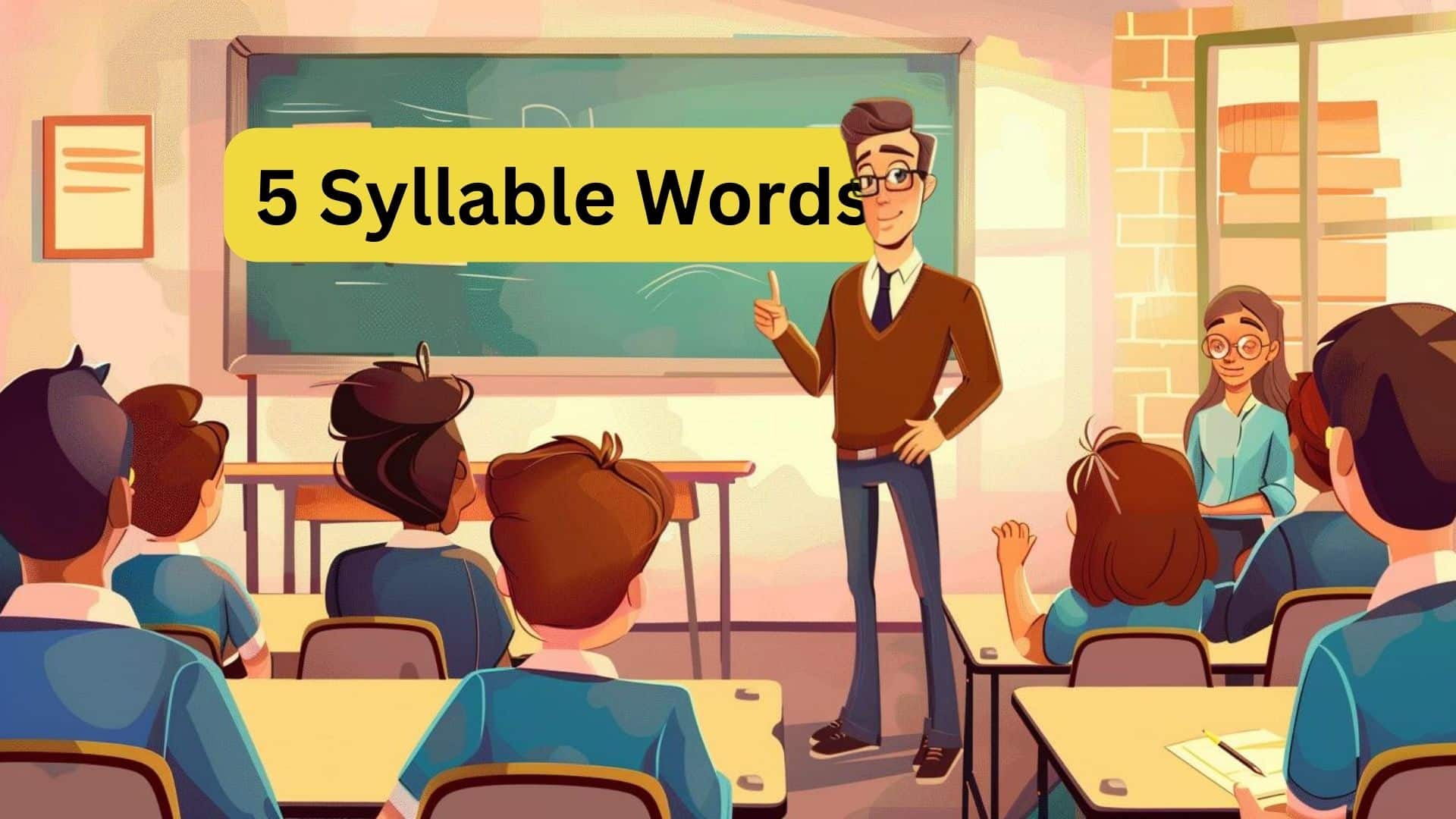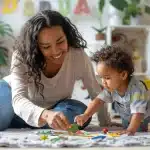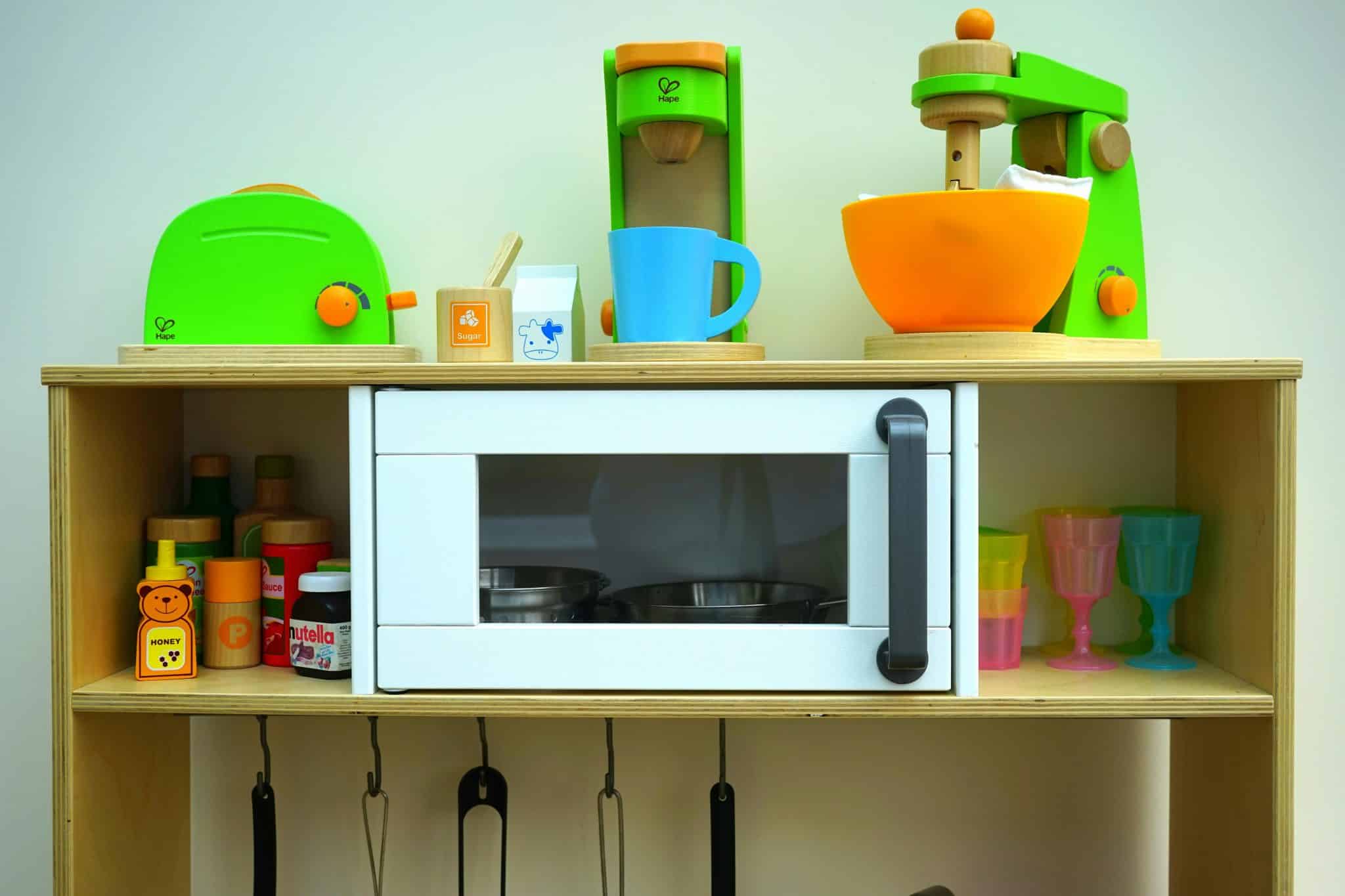Learning to break down words into syllables is a crucial skill for young readers.
As kids progress through school, understanding how to chunk multisyllabic words becomes increasingly important for decoding, pronouncing, and spelling longer words.
Over 80% of English words contain two or more syllables!
Teaching children to identify and manipulate individual sounds within words lays the foundation for strong phonological awareness and advanced reading abilities.
In this article, we’ll explore the significance of syllables and share fun, engaging activities to help kids master even the most challenging 5-syllable words.
Incorporating these exercises into your teaching routine will set your students up for success as they tackle more complex reading materials.
Let’s dive in and discover how to make learning about syllables exciting!
Understanding Syllables
- A syllable is a single, unbroken sound in a word, consisting of at least one vowel sound and sometimes accompanied by consonants.
- It’s the building block of words and helps kids break down longer words into smaller, more manageable chunks.
There are six main types of syllables:
- Open
- Closed
- Silent E
- Vowel pair
- R-controlled
- Final stable
Each type follows specific rules determining how the vowel sound is pronounced within the syllable.
- Understanding syllables is essential for children learning to read and write, as it helps them confidently tackle complex words.
- By breaking words down into syllables, kids can more easily decode unfamiliar words and sound them out piece by piece.
- Syllable knowledge also aids in spelling, as children can break words into smaller parts, making remembering the correct spelling of each syllable easier.
Preparatory Activities for Teaching 5 Syllable Magic
1. Clapping Syllables
Clapping syllables is a simple and enjoyable activity that helps children identify the beats in a word.
To begin, demonstrate how to clap the syllables of a word, such as:
- /re/vo/lu/tion (revolution)
- /im/pli/ca/tion (implication)
Encourage children to join and clap as they say each word, emphasizing the syllables.
This activity is highly engaging and can be done with words of varying lengths, from single-syllable words to more complex 5-syllable words.
Clapping syllables helps kids better understand word structure and improves their ability to break down words into smaller, more manageable parts.
2. Stomping Syllables
Stomping syllables is another fun, kinesthetic activity that teaches children about word parts.
To practice stomping syllables, have children stomp their feet for each syllable they hear in a word, such as:
- /re/cy/cla/tion (recyclation)
- /in/ter/ro/ga/tion (interrogation)
This activity is perfect for children who learn best through movement and physical activity.
As they stomp out the syllables, they’ll develop a stronger connection between the sounds they hear and the physical representation of those sounds.
Stomping syllables can be done with words of various lengths and complexity, making it adaptable for different age groups and skill levels.
3. Counting Jaw Drops
Counting jaw drops is a unique way to help children identify word syllables.
To practice this activity, have children place their hand under their chin and count the number of times their jaw drops as they say a word, such as:
- /de/mon/stra/tion (demonstration)
- /e/le/va/tion (elevation)
Each time the jaw drops, it indicates a new syllable in the word.
This activity helps children develop a physical awareness of syllables and reinforces the connection between the spoken word and its parts.
Counting jaw drops can be done with words of various lengths and complexity, making it a versatile activity for different age groups and skill levels.
Interactive and Fun Activities
4. Robot Talk
Robot Talk is an entertaining way for children to practice emphasizing each syllable in a word.
To engage in this activity, have children speak like robots, clearly enunciating each syllable in words such as:
- /in/for/ma/tion (information)
- /co/op/e/ra/tion (cooperation)
This activity helps children develop a clear understanding of the distinct parts that make up words.
As they speak like robots, they’ll learn to break words down into smaller, more manageable chunks, essential for reading and spelling success.
Robot Talk can be done with words of various lengths and complexity, making it adaptable for different age groups and skill levels.
5. Hopping Syllables
Hopping Syllables is a fun physical activity that gets children moving while learning about syllables.
To play, have children hop for each syllable they hear in a word, such as:
- /com/mu/ni/ca/tion (communication)
- /e/le/c/tri/ci/ty (electricity)
This activity combines physical movement with syllable identification, engaging children on multiple levels.
They’ll better understand the relationship between the spoken word and its parts as they hop.
Hopping Syllables can be done with words of various lengths and complexity, making it adaptable for different age groups and skill levels.
6. Syllable Hide and Seek
Syllable Hide and Seek is an engaging game that challenges children to find objects based on the number of syllables in their names.
To play, hide objects around the room and have children find them by calling out the number of syllables in each object’s name, such as:
- /ad/min/is/tra/tion (administration)
- /im/por/ta/tion (importation)
This activity combines the fun of a scavenger hunt with syllable counting practice.
As children search for objects, they’ll develop a stronger awareness of the syllables in words and improve their ability to break words down into smaller parts.
Syllable Hide and Seek can be played with words of various lengths and complexity, making it adaptable for different age groups and skill levels.
7. Using Musical Instruments
Using musical instruments is a fun and engaging way to help children identify syllables in words.
To practice this activity, have children use drums, shakers, or tambourines to emphasize each syllable in a word, such as:
- /ce/le/bra/tion (celebration)
- /tran/si/tion/al (transitional)
This activity combines music and rhythm with syllable identification, appealing to children with different learning styles.
Children will better understand the relationship between sounds and syllables in words as they play their instruments.
Using musical instruments can be done with words of various lengths and complexity, making it adaptable for different age groups and skill levels.
8. Drawing Syllables
Drawing Syllables is a simple yet effective activity that helps children visualize the number of syllables in a word.
To practice this activity, have children draw a mark on paper for each syllable they hear in a word, such as:
- /de/fi/ni/tion (definition)
- /in/ves/ti/ga/tion (investigation)
This activity combines visual representation with syllable identification, appealing to children who learn best through visual aids.
As they draw marks for each syllable, children will better understand the relationship between the spoken word and its parts.
Words of various lengths and complexity can be used to draw syllables, making them adaptable to different age groups and skill levels.
9. Syllable Sorting
Syllable Sorting is an activity that helps children categorize words based on the number of syllables they contain.
To practice this activity, provide children with a set of words and have them sort the words into categories based on the number of syllables, such as:
- /com/pli/ca/tion (complication)
- /tran/spor/ta/tion (transportation)
This activity helps children understand the relationship between words and their syllable counts.
As they sort words, they’ll improve their ability to break words down into smaller parts and recognize patterns in word structure.
Syllable Sorting can be done with words of various lengths and complexity, making it adaptable for different age groups and skill levels.
10. Syllable Manipulation
Syllable Manipulation is an advanced activity that challenges children to modify words by adding, deleting, or substituting syllables.
To practice this activity, provide children with a base word and have them create new words by manipulating the syllables, such as:
- Change /in/vi/ta/tion to /ex/pla/na/tion (invitation to explanation)
This activity helps children develop a deeper understanding of the role syllables play in word formation.
As they manipulate syllables, they’ll improve their ability to recognize patterns in word structure and develop more advanced word-building skills.
Syllable Manipulation can be done with words of various lengths and complexity, making it adaptable for different age groups and skill levels.
11. Puppet Play
Puppet Play is an engaging activity that allows children to practice identifying syllables in words through imaginative play.
To practice this activity, have children use puppets to say the syllables in words, such as:
- /per/so/na/li/ty (personality)
- /mul/ti/pli/ca/tion (multiplication)
This activity combines the fun of puppetry with syllable identification, making it appealing to children who learn best through imaginative play.
Children will better understand the relationship between the spoken word and its parts as they use puppets to say each syllable.
Puppet Play can be done with words of various lengths and complexity, making it adaptable for different age groups and skill levels.
12. Rhythm Sticks
Using Rhythm Sticks is a fun and musical way for children to practice identifying syllables in words.
To practice this activity, have children tap rhythm sticks together for each syllable they hear in a word, such as:
- /a/ma/zon/ian (Amazonian)
- /pro/ba/bi/li/ty (probability)
This activity combines music and rhythm with syllable identification, appealing to children with different learning styles.
As they tap their rhythm sticks, children will better understand the relationship between sounds and syllables in words.
Rhythm Sticks allows you to use words of various lengths and complexity, making it adaptable for different age groups and skill levels.
13. Story Time Syllables
Story Time Syllables is an activity that integrates syllable practice into daily reading routines.
To practice this activity, read stories aloud to children and have them identify five-syllable words, such as:
- /u/ni/ver/si/ty (university)
- /au/tho/ri/ty (authority)
This activity combines the enjoyment of storytelling with syllable identification, making it a natural and engaging way to practice syllable skills.
As children listen to stories and identify five-syllable words, they’ll develop a stronger awareness of the syllables in words and improve their ability to break words down into smaller parts.
Story Time Syllables can be created using various age-appropriate books, making them adaptable to different age groups and skill levels.
14. Syllable Poems
Syllable Poems is a creative activity that challenges children to write poems using words with five syllables.
To practice this activity, have children write Limericks or Haikus featuring five-syllable words, such as:
- Limericks and Haikus featuring five-syllable words
This activity combines the fun of creative writing with syllable practice, making it appealing to children who enjoy language arts.
As they write poems using five-syllable words, children will develop a stronger understanding of word structure and improve their ability to identify syllables in words.
Syllable Poems can be written in various poem formats, making them adaptable for different age groups and skill levels.
15. Interactive Games
Interactive Games are a fun and engaging way to practice syllable counting and identification skills.
To play these games, have children participate in activities like “I Spy” with a focus on syllable counting, such as:
- “I spy with my little eye something with five syllables.”
These games combine the excitement of play with syllable practice, making them appealing to children of all ages.
As they play, children will develop a stronger awareness of the syllables in words and improve their ability to break words down into smaller parts.
Interactive Games can be adapted to suit a variety of age groups and skill levels, making them a versatile tool for syllable practice.
16. Educational Apps
Educational Apps are a technology-based approach to practicing syllable counting and word segmentation skills.
To use these apps, have children engage with apps that break down words into syllables visually and audibly, such as:
- Apps that break down words into syllables visually and audibly
These apps combine visual and auditory learning with syllable practice, making them appealing to children with different learning styles.
Children will better understand the relationship between the spoken word and its parts as they use these apps.
Educational Apps can be adapted to suit a variety of age groups and skill levels, making them a versatile tool for syllable practice.
17. Syllable Puzzles
Syllable Puzzles are a hands-on activity that challenges children to match syllables to form words.
To practice this activity, create puzzles where children match syllables to form words, such as:
- /in/ter/na/tion/al (international)
- /com/mu/ni/ty (community)
This activity combines problem-solving skills with syllable practice, appealing to children who enjoy puzzles and challenges.
As they complete these puzzles, children will develop a stronger understanding of word structure and improve their ability to identify syllables in words.
Syllable Puzzles can be created with words of various lengths and complexity, making them adaptable for different age groups and skill levels.
18. Daily Syllable Challenges
Daily Syllable Challenges are a fun way to incorporate syllable practice into everyday routines.
To practice this activity, provide children with daily word challenges focusing on five-syllable words, such as:
- Words like /de/mon/stra/tion,
- /con/sti/tu/tion/al
These challenges combine the excitement of daily games with syllable practice, making them appealing to children of all ages.
As they complete these challenges, children will develop a stronger awareness of word syllables and improve their ability to break words down into smaller parts.
Daily Syllable Challenges can be adapted to suit a variety of age groups and skill levels, making them a versatile tool for syllable practice.
19. Syllable Hopscotch
Syllable Hopscotch is a fun physical activity combining syllable practice and gross motor skills.
To play this game, create a hopscotch grid with syllable counts and have children hop on the grid while saying words with the corresponding number of syllables, such as:
- /in/ves/ti/ga/tion,
- /con/ven/ti/on/al
This activity combines physical movement with syllable practice, appealing to children who enjoy active play.
As they hop on the grid and say words, children will better understand the relationship between syllables and word structure.
Syllable Hopscotch can be adapted to suit a variety of age groups and skill levels, making it a versatile tool for syllable practice.
20. Syllable Relay Race
Syllable Relay Race is a fun and competitive activity that challenges children to work together to form words using syllables.
To play this game, have children participate in a relay race where they run to place syllables in the correct order to form words, such as:
- /tran/spor/ta/tion,
- /ap/pre/ci/a/tion
This activity combines physical movement with syllable practice, appealing to children who enjoy team games and competitions.
As they race to form words using syllables, children will better understand word structure and improve their ability to identify syllables in words.
Syllable Relay Race can be adapted to suit a variety of age groups and skill levels, making it a versatile tool for syllable practice.
21. Syllable Art
Syllable Art is a creative activity that combines syllable practice with artistic expression.
To practice this activity, have children create art projects featuring words broken down into syllables, such as:
- /e/le/men/ta/ry,
- /com/pre/hen/sion
This activity combines the fun of art-making with syllable practice, making it appealing to children who enjoy creative activities.
As they create art projects featuring words broken down into syllables, children will better understand word structure and improve their ability to identify syllables in words.
Syllable Art can be adapted to suit a variety of age groups and skill levels, making it a versatile tool for syllable practice.
22. Memory Games
Memory Games are a fun and challenging way to practice syllable identification and word recognition skills.
To play these games, create memory card games featuring five-syllable words, such as:
- /u/ni/ver/si/ty,
- /ad/ven/tu/ri/ous
These games combine the excitement of matching and memory skills with syllable practice, making them appealing to children of all ages.
As they play, children will develop a stronger awareness of the syllables in words and improve their ability to recognize and recall words based on their syllable structure.
Memory Games can be adapted to suit a variety of age groups and skill levels, making them a versatile tool for syllable practice.
23. Using Poetry
Using Poetry is a creative and engaging way to practice syllable identification and word-play skills.
To practice this activity, have children write Haikus and Limericks using five-syllable words, such as:
- /hip/po/po/ta/mus,
- /bi/cy/cle/
This activity combines the fun of creative writing with syllable practice, making it appealing to children who enjoy language arts and wordplay.
As they write poems using five-syllable words, children will develop a stronger understanding of word structure and improve their ability to identify and manipulate syllables in words.
Poetry can be adapted to suit a variety of age groups and skill levels, making it a versatile tool for syllable practice.
24. Syllable Counting in Daily Routines
Syllable Counting in Daily Routines is a simple and effective way to incorporate syllable practice into everyday activities.
To practice this activity, incorporate syllable counting into daily routines, such as:
Count syllables in names during attendance or line-up
This activity combines the structure of daily routines with syllable practice, making it a natural and easy way to reinforce syllable skills.
As they count syllables in everyday activities, children will develop a stronger awareness of the syllables in words and improve their ability to break words down into smaller parts.
Syllable Counting in Daily Routines can be adapted to suit a variety of age groups and skill levels, making it a versatile tool for syllable practice.
25. Syllable Songs
Syllable Songs are a fun and musical way to practice syllable identification and wordplay skills.
To practice this activity, create songs or chants that emphasize five-syllable words, such as:
Sing songs that include words like /con/ver/sa/tion, /e/lec/tri/ci/ty
This activity combines the enjoyment of music with syllable practice, making it appealing to children who enjoy singing and rhythm.
As they sing songs featuring five-syllable words, children will better understand word structure and improve their ability to identify and manipulate word syllables.
Syllable Songs can be adapted to suit a variety of age groups and skill levels, making them a versatile tool for syllable practice.
26. Interactive Reading Sessions
Interactive Reading Sessions are a simple and effective way to incorporate syllable practice into daily reading routines.
To practice this activity, read aloud to children and pause to count syllables in complex words, such as:
Identify five-syllable words in reading materials
This activity combines the enjoyment of storytelling with syllable practice, making it a natural and engaging way to reinforce syllable skills.
As they listen to stories and count syllables in complex words, children will develop a stronger awareness of the syllables in words and improve their ability to break words down into smaller parts.
Interactive Reading Sessions can be adapted to suit a variety of age groups and skill levels, making them a versatile tool for syllable practice.
27. Syllable Challenges at Home
Syllable Challenges at Home is a fun and engaging way to extend syllable practice beyond the classroom.
To practice this activity, encourage parents to engage their children in syllable activities at home, such as:
Parent-child syllable games during car rides or walks
This activity combines the enjoyment of family bonding with syllable practice, making it a natural and engaging way to reinforce syllable skills.
As they participate in syllable challenges at home, children will develop a stronger awareness of word syllables and improve their ability to break words down into smaller parts.
Syllable Challenges at Home can be adapted to suit a variety of age groups and skill levels, making them a versatile tool for syllable practice in everyday life.
Conclusion
Understanding syllables is essential for developing strong phonological awareness and advanced reading skills.
Engaging in the activities discussed in this article can help children make significant progress in identifying, manipulating, and reading multisyllabic words.
Regularly reflecting on their growth and setting new goals will help them continue to improve their word-reading abilities.
Parents play a vital role in reinforcing syllable learning at home.
Simple activities like clapping syllables in names, playing “I Spy” with syllable counts, and reading together while identifying multisyllabic words can greatly support a child’s progress.
Encouraging family participation in syllable challenges during daily routines makes learning fun and engaging.
Explore resources such as the “Multisyllabic Words Toothy Pack” from Lucky Little Learners and the “How Many Syllables” online tool for additional practice.









